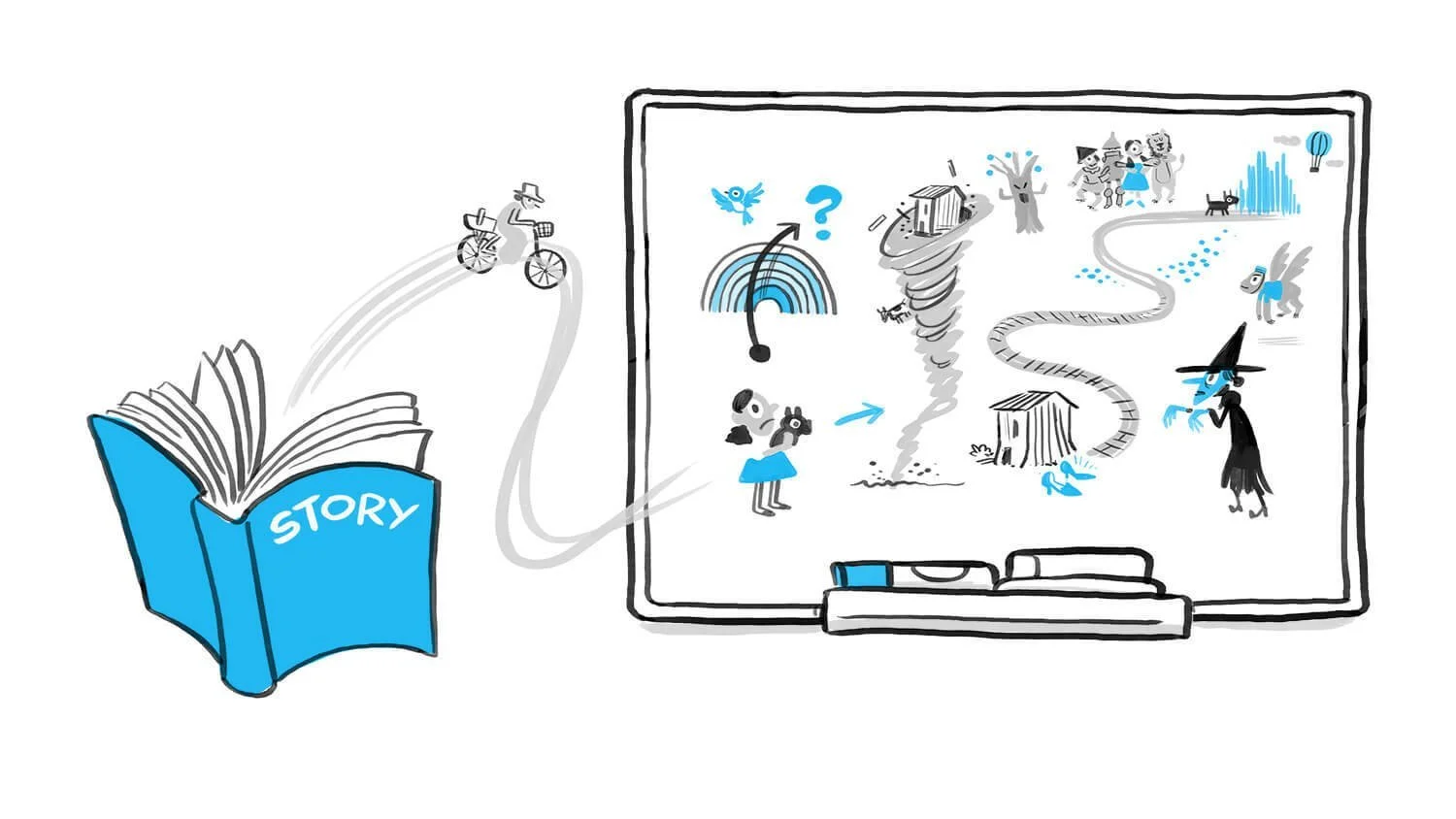It’s funny how things can change. Twenty years ago, our phones were only good for playing Snake and texting on a frustratingly small keypad. Since then, however, they’ve become portals to a whole world of information, entertainment and distractions. Our phones go with us everywhere, even in to the toilet. So, it’s unsurprising that as of November 2022, 89.5% of visits to YouTube came from mobile devices.
This creates a dilemma for explainer video creators: whether to opt for vertical videos or landscape videos for their explainer content. Let's delve into this debate and uncover which format suits explainer videos best: vertical, landscape, or perhaps a blend of both.
Understanding Explainer Videos:
Before we dive into the vertical vs. landscape debate, let's quickly define what explainer videos are. Explainer videos are short, animated presentations designed to explain a product, service, or concept in a clear and compelling way. They often incorporate elements like graphics, animations, voiceovers, and on-screen text to simplify complex topics and engage viewers.
Vertical Video Tips
We’ve been watching vertical video since the late 2010s and it’s been growing in popularity. If you’re thinking of cashing in on this popularity and creating a vertical video, these tips from Firework offer some great advice:
While every platform is different, the 9:16 aspect ratio is considered the universal standard for vertical video dimensions.
Always shoot your footage or plan your animation to work vertically primarily, rather than as an afterthought.
Fill the frame as much as possible, to make the most of the vertical format.
Create a video that grabs a viewer’s attention in the first three seconds.
The Case for Vertical Explainer Videos
Mobile-Friendly Design: Vertical videos are tailor-made for mobile viewing, aligning perfectly with the way people hold their smartphones. With the increasing dominance of mobile devices, especially among younger demographics, vertical explainer videos can offer a seamless viewing experience.
Optimised for Social Media: Platforms like Instagram Stories, TikTok, and Snapchat prioritise vertical content, making it more likely to catch the attention of users scrolling through their feeds. Vertical explainer videos have a better chance of standing out in the crowded social media landscape.
Increased Engagement: Research suggests that vertical videos tend to generate higher engagement rates on social media platforms compared to their landscape counterparts. The immersive nature of vertical viewing encourages viewers to interact with the content and stay engaged for longer durations.
The cons of vertical video
Vertical videos may have taken the world by storm, but they’re not without their problems. The biggest issue is that they are best suited for light, short form content. So, if your message is more detailed or in-depth, a vertical video might not be the best way for it to engage viewers and deliver its important information.
Then there is the vertical format itself. Being vertical, it limits your videos' field of vision and the filming or editing techniques you can use. Vertical videos don’t necessarily work for everyone either, critics of the format say that a vertical video can be confusing and throw off the eye.
Finally, while vertical videos are welcomed by many apps - they still don’t work universally on every player.
Why use a landscape video?
Comprehensive Storytelling: Landscape format offers a wider canvas for storytelling and allows creators to incorporate more details and visual elements into their explainer videos. This can be particularly beneficial when explaining complex processes or showcasing intricate product features.
Cross-Platform Compatibility: While some social media platforms prefer vertical content, landscape explainer videos are universally compatible across various devices and platforms. They can be repurposed for YouTube, websites, presentations, and other digital channels without compromising quality.
Professional Aesthetic: Landscape videos are often associated with a more professional aesthetic and higher production values, making them suitable for businesses and brands looking to convey credibility and authority through their explainer content.
Finding the Right Balance
Rather than viewing the vertical vs. landscape debate as a binary choice, consider blending both formats to maximise the reach and impact of your explainer videos. You can create a landscape version for your website or YouTube channel and repurpose snippets of the video into a vertical format for social media promotion. This hybrid approach allows you to cater to different viewing preferences and platforms without duplicating efforts.
Vertical videos are an exciting new and largely short-form format which is finding more and more homes across the internet. Perfectly designed to perform well on mobile phones, vertical videos have been enthusiastically embraced by viewers across the world.
Vertical videos are an exciting new and largely short-form format which is finding more and more homes across the internet. Perfectly designed to perform well on mobile phones, vertical videos have been enthusiastically embraced by viewers across the world.
But this doesn’t mean that landscape videos should take their coat and leave, they still have an important role to play in explaining bigger, more complex and detailed messages.
Whiteboard animation can help you create engaging and memorable videos for both these formats, and we’d love to answer any questions you might have about it and how your message could work as a whiteboard video.






























By combining simplicity, creativity, and visual storytelling, whiteboard animation offers numerous benefits that can help companies improve their communication strategies. In this blog post, we will explore some of the key advantages that whiteboard animation brings to the table.